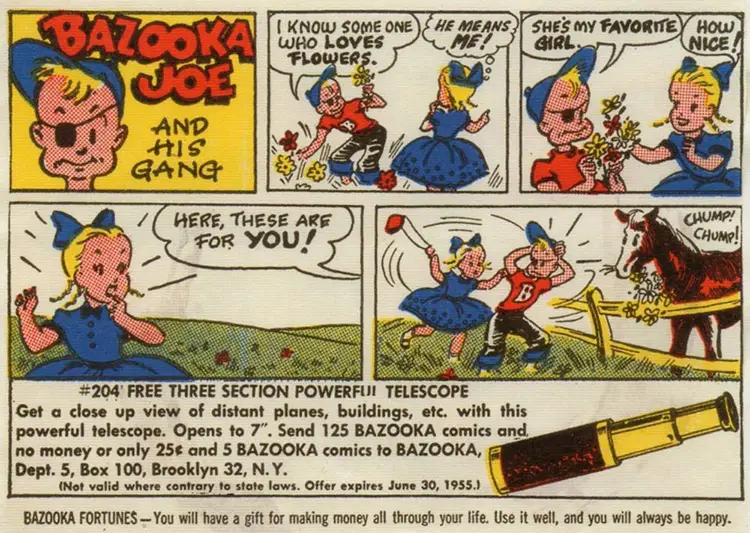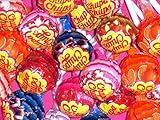“Old people candy” is a phrase people search for when looking for candies as gifts. “Old people” as a phrase is not one we care to use, preferring instead for the more respectful elder or senior, but for better or worse, it’s still a phrase many people use when talking about older adults. And the reality is “old people candy” does bring up images, at least for me, of grandmother’s candy jars. Those candies were – and still are – very different from much of the candy people buy today.
Candy can be traced back over 3,000 years, when some smart caveman discovered the joy of eating honey. That honey satisfied man’s first sweet tooth and has been doing so ever since. The ancient Egyptians created the first candy by combining sweet honey with figs, nuts, dates, and other available food.
Candy bars go back to the 19th century, when cacao butter, cocoa powder, and something sweet, such as sugar or honey, were pressed into a mold. Instant chocolate. The first such candy bar was called the Fry’s Chocolate Cream Bar. Follow the link for more on the history of candy (it’s quite interesting).
Seniors certainly enjoy their candy, too. Searching for candies from yesteryear can bring back a sense of nostalgia and memories. Let’s hope this article serves both audiences: seniors looking for candies from their childhood and people looking for creative gifts for older adults.
Old People Candy by Decade
When I started writing this article I had imagined a list of long-gone candies that you can’t find at your local convenience store. I was surprised to find that many of those same candies available today have a long history. In fact, many of the candies that would be classified as “old people candy” are also “young people candy.”
Instead of focusing on those, however, I’m choosing to highlight some of the lesser known candies (by today’s kids). Snickers, as an example, might be an old candy bar historically speaking, but it’s not a unique gift nor is going to create any sense of nostalgia for 99% of older adults looking for something sweet from their childhood.
So, following is a list of unique and harder-to-find candies from yesteryear. If I’m missing something, by all means add a comment to the article and let me know. I can add it to the list!
6 Popular Candy From The 1930s
The Great Depression may have overwhelmed the country, but people still found ways to enjoy an occasional candy. With so many people out of work and struggling financially, an inexpensive piece of candy was a real treat. Interestingly, candy was affordable to most people, and there was plenty of it. These are the candies from the childhoods of today’s most senior seniors.
Candy Buttons (or Dots)
We’re starting with one of my favorites! I love candy buttons, and while I was born in the 1970s, it’s still considered an old candy. I associate this candy with Christmas morning and eating them out of my Christmas stocking as breakfast. I still get them today from family members looking to get me something unique.
Candy buttons are small button-type candies attached to a strip of paper that were frequently used to decorate cupcakes, much like today’s M&Ms. I pluck them right off the paper with my teeth! In the 30s, these came in cherry and lime flavors. Today’s candy buttons have more flavors.
Chick-O-Stick Candy
Chick-O-Stick came out in 1938 and produced by Atkinson Candy Company. These candies consist of honey on the outside and crunchy peanut butter on the side, all coated in coconut flakes. There are also sugar free versions for those that need it for dietary reasons or preference.
The basic combination of ingredients wasn’t too much different than today’s candy bars. The candy was long and thin and easy to share. Today’s wrapper differs from the original, which included a chicken wearing a cowboy hat. Supposedly this created confusion on whether it was a candy or a chicken-flavored cracker (source).
Boston Baked Beans
- The original candy coated peanuts
- A tasty treat, founded in 1924, history is so sweet
The Boston Baked Beans is a favorite candy of my 70-something father. I look for them at specialty stores (or online) when Christmas or his birthday come along. Despite its name these Boston Baked Beans do not contain any beans and they’re not from Boston. They are sugar-coated peanuts developed in Chicago (source). The sugar coating is an interesting mix of brown sugar and molasses, giving the candy a very unique taste.
Red Hots (Cinnamon Imperials)
- CAN YOU HANDLE THE HEAT? Experience the powerful, fiery taste of cinnamon with Red Hots Cinnamon Candy. Their round shape nestles on your tongue, delivering wave after wave of spicy flavor
- MANY WAYS TO ENJOY: Whether you eat them by the handful, put them on a birthday cake or use them as a decorative touch to your gingerbread house, there are a million fiery ways to enjoy Red Hots
These candies, sometimes called Cinnamon Imperials, include a fierce dose of cinnamon-based heat to the tongue. These small bits of candy will fire your mouth up. The cinnamon definitely lingers on the tongue.
Sugar Babies Candy
Another older candy that even I remember from my childhood. A dentist’s worst nightmare, these candies, babies (presumably) from the larger Sugar Daddy candy, would easily get stuck to teeth via their sticky nature. They didn’t derive their name from Sugar Daddy, however, but from the song Let Me Be Your Sugar Baby (source).
The candy was originally produced by the James O. Welch Co and later bought by Nabisco in 1963. Milk chocolate and caramel are the simple ingredients to this candy favorite. They are small little “babies” and can be eaten by the handful. To this day, they are still a popular movie candy.
PayDay Candy Bar
- PayDay Bar - 1.85 oz. Bar - 24 ct.
Too salty for my taste, but the PayDay candy bar was popular during the Great Depression, the name alone would have made this candy popular. The candy bar was first produced by Hollywood Candy Company and is owned today by The Hershey Company (source).
It is a rare candy bar in that it contains no chocolate. Instead, it is filled with peanuts, caramel, and nougat. The salt in the peanuts work well with the sweetness of the caramel and the combined ingredients have a wonderful texture.
8 Popular Candies From The 1940s
As if things couldn’t get any worse than the Great Depression in the 1930s, the 1040s ushered in a cruel and devastating World War that changed the world as we had known it. One of the bright points was the introduction of the Polaroid Camera, a source of many grandparents’ photos lingering in old photo albums. The 40s also gave people the opportunity to watch their favorite television shows in color. Imagine!
The war forced the rationing of some ingredients, but that wasn’t going to stop the production of sweet candy.
Allan Hot Lips Candy
This candy is unique to me. I had never even heard of it before writing this article. As the name implies, these red candies are shaped like saucy lips. Filled with cinnamon, they are hot and spicy. This is chewy cinnamon goodness (so I hear). These are of Canadian origin and may not be found everywhere in the United States, which probably explains why I haven’t seen it.
Bazooka Gum
- FESTIVE BAZOOKA GUM: Iconic pink gum in wallet packs, a whimsical stocking stuffer for kids this festive season.
- ORIGINAL BUBBLE GUM JOY: 12 packs of Bazooka gum with 10 individually-wrapped Bazooka bubble gum pieces, bursting with signature flavor, light up kids’ festive moments.
Now this is a candy I recall! It was still present everywhere when I was kid, and I can taste it now, the hard piece of gum that is difficult to chew in the beginning, softens up, and then slowly gets harder again as the sugar dissolves. Too hard to chew for people with dentures? Maybe, but you still have to love the tiny Bazooka Joe comics tucked inside the wrapper.
There are a lot of bubble gums on the market today, but it all started with Bazooka Gum in 1947. Back then, the Bazooka comic strip that was almost as popular as the pink gum itself. Ask any senior about blowing a bubble and getting Bazooka plastered all over his or her face.
Bonomo Turkish Taffy
Turkish Taffy came along in 1912. The rights were acquired by Bonomo Company in 1897. While it’s called “taffy,” according to a member of the Bonomo family, it’s not actually taffy but a nougat. It was also not Turkish. While technically created earlier than the 1940s, it is associated with the 1940s because in 1949 it was the first forms of candy advertised on television (source).
Tootsie Roll bought it in 1980, it was discontinued in 1989, and brought back to life in 2003.
Jolly Ranchers Candy
- Jolly Rancher Hard Candy in Assorted Flavors 3.8 Oz each (3 Pack)
This candy barely made the 1940s list as it was first produced in 1949. The name was chosen to give it a friendly sound evoking the impression of the US West. The company also made ice cream and chocolate in the Denver area (source).
I still see these appear once in a while, and while I think they’re probably available at the corner convenience store, I think they’re still highly regarded among today’s older adults. Jolly Ranchers are hard candies with fruity flavors that play with your taste buds. The original Jolly Ranchers were all fruity, but the company has added a few hot and spicy flavors to satisfy a new generation of candy lovers.
Junior Mints
Another candy still appearing in movie theaters, Junior Mints contain a soft, minty interior covered in dark chocolate with a dimple on one side. They were named after a successful Broadway show of 1949, Junior Miss, the same year they were introduced by the James Welch Company of Massachusetts. This brand was later acquired by Nabisco, then by Warner-Lambert, and most recently by Tootsie Roll in 1933.
Fun Dip
- Indulge in the sweet and tangy delights of Fun Dip with our 44-count Halloween candy pack, featuring the popular Cherry Yum Diddly Dip and Razz Apple Magic flavors.
- Each pack includes powdered candy and a candy stick, providing an interactive and delicious treat experience for Halloween parties, trick-or-treating, or snacking.
These are little packets filled with flavor and fun, and they’re another one of my personal favorites from my childhood. I still buy them for the kids come Christmas time. Nothing like virtually pure sugar to ramp kids up!
There are several flavors of these powders. They started with grape and cherry. Lime was added in the 70s and subsequently replaced with raspberry. Orange and lemon-flavored powders were also added. The idea is to use the “Fun Dip” to scoop up the powder. I would like the dipstick first, then the sugar sticks to it allowing you to suck the sugar off and repeat. Once the powdered sugar is gone, the dip itself can be eaten.
Saf-T-Pops Lollipops
The Saf-T-Pops Lollipops were specifically created for toddlers (still not sure how safe they are for toddlers). To ensure that little ones couldn’t hurt themselves with a sharp, straight, lollipop stick, these lollipops were made with a loopy, round type of stick that was and still is safe for young children. A favorite of both parents and children alike.
Old timers might remember eating these themselves or buying them for their kids. They were first made in the 1940s, and the “Safe-T” handle itself was trademarked in 1942.
Smarties Candy
- Classic Candy Bliss: Indulge in the timeless delight of Smarties bulk candy rolls, a nostalgic favorite loved for over 50 years. Perfect for birthdays, or anytime you crave the sweet, tangy flavor you remember.
- Vegan & Gluten Free Goodness: Enjoy guilt free treats with Smarties Candy Rolls completely vegan and gluten free. Satisfy your sweet tooth without compromising on dietary preferences, making it the ideal choice for those with Celiac Disease or seeking a delicious vegan option.
Another long-time favorite of mine. Smarties are a small wafer candy coming in six (similar in taste) flavors. There is no chocolate to melt, so these are a no-mess candy treat. I remember many of these being paired with Dum Dum lollipops, allowing for many jokes/uses like “be a smartie not a dum dum.”
6 Popular Candies From The 1950s
Big Hunk
No products found.
Big Hunk came into being in the 1950s by Golden Nugget Company, which was later bought out by Annabelle Candy Company (source). The candy bar is comprised of a chunk of honey nougat filled with roasted peanuts. This wonderful combination made it an instant bestseller.
Following the Great Depression and the War, we look back at the 1950s as a simpler time. Elvis was shaking up a nation, and Howdy Doody and Gunsmoke ruled radio and television. And hair was being teased up to the sky. Definitely simpler times.
Chupa Chups Lollipops
- Chupa Chups Assorted Lollipops, 1LB
- Comes in resealable bag for easy storage
These lollipops are a favorite throughout the world. The name Chupa Chups is Spanish for “to suck.” The candy itself was founded in 1958, but its now semi-famous logo and wrapper was designed by Salvador Dali in 1969. This was just the first of their creative attempts at marketing. Later creative measures were used to try drawing adults to the lollipop who were trying to quit smoking. They used slogans such as “Smoke Chupa Chups” and “stop smoking, start sucking.”
Lucky Elephant Pink Candy Popcorn
- Caramelized Popcorn with a pink Candy Coating.
- Classic Taste
This Canadian pink popcorn was demanded by all children at fairs and carnivals. This is likely in part because each box contained a small prize inside, much like the old Cracker Jack caramel-coated popcorn (talk about old, Cracker Jack goes back to 1857!).
This is another candy I had never heard of before writing this article, again I’m guessing that’s because of its Canadian origin. You can still find it today at small specialty stores, concession stands, and – online (of course).
Mamba Fruit Chews
These fruity chews originated in Germany with five flavors: cherry, lemon, orange, strawberry, and raspberry. They have added tropical flavors since then and sour was added in 2007. They have a taffy-like consistency and chew to them. They’re big pieces of candy, so for the older person with chewing problems, Mamba could present a challenge.
Pixy Stix Candy
- FRUITY GOODNESS: These Pixy Stix (85 ct) are packed with fruity flavors: grape, Maui punch, cherry, and orange. They’re a sweet tooth's dream that’ll make your taste buds do a happy dance
- TREAT ON THE GO: With their convenient, easy-to-use straw design, Pixy Stix are the perfect fruity candy powder in a fun, colorful straw for a treat while you're out and about
This candy started out as a powdered drink, then it turned into popular candy. When I was a kid they were still quite easy to find, not so much anymore. I have memories of pouring the sugar from the giant plastic straws into my mouth. Then we would cut the ends of the straws off, wrap yarn around the hook end of a needle, and turn these straws into blowguns where we would shoot the needle out the end. Dangerous, for sure. Boys…
Satellite Wafers (flying saucer candy)
Aliens were a thing in the 50s, or at least the fear of aliens was. These wafers were made in the shape of flying saucers and filled with sugar and beads of candy. It’s the inside that candy-lovers want to get to.
These candies were particularly popular in the UK from the 1960s to the 1970s, in large part due to the global space race and renewed interest in science fiction. They are still popular today in Belgium, Ireland, and the UK (source).
Vintage Candy Recap
Candy from yesteryear is a perfect way to bring a smile to an older person’s face. Remember the sight – and flavor – of the candy from one’s childhood is sure to evoke happy memories.
There were, of course, plenty of other candies from these eras that were left off the list. I tried to keep it tight and focus on some of the staples from each decade.
Thoughts comments or suggestions? What are the old candies that you treasured most? Are they still around? Let us know in the comments section.





















